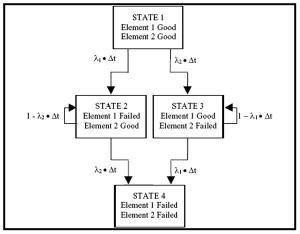- Introduction
- As the economic and business conditions vary over time, an organisation is closely related to how well management is able to anticipate the future and develop appropriate strategies. Good judgement, intuition and an awareness of the state of the economy may give a manager a rough ride or “feeling” of what is likely to happen in the future.
- The purpose of this article is to introduce various forecasting methods.
2. Forecasting Methods
Forecasting methods can be classified as ‘qualitative’ or ‘quantitative’. The qualitative methods use personal judgement and involve qualities like intuition and experience as the basis of forecasts, and are subjective by their very nature. On the other hand, quantitative methods are objective in nature and they employ numerical information as the basis of making forecasts. In quantitative methods, a forecast can be developed using time series method or casual method.
- The time series methods attempt to predict the future values using the historical data. The objective is to discover pattern in the historical data and then extrapolate this pattern into this future; the forecast is based solely on past values of the variable that we are trying to forecast and/or on past forecast errors.
- Casual forecasting methods are based on the assumption that the variable we are trying to forecast exhibits a cause-effect relationship with one or more other variables. For example, the demand for a product may be seen to be dependent upon the price charged, income of the people, amount spent on the advertisement and so on. The analysis is done in terms of what is called as regression analysis.
- Qualitative methods generally involve the use of expert judgement develop forecasts. For instance, a panel of experts might develop a consensus forecast of the prime rate for a year from now. An advantage of qualitative procedure is that they can be applied when the information on the variable being forecast cannot be quantified and when historical data either are not applicable or available.
- 3. Components of a time series
- A time series is a set of measurements of a variable that are ordered through time. The measurements may be taken as an hour, day, week, month, or year, or at any other regular interval.
- The pattern or behaviour of the past data in a time series has several components. The usual assumptions is that four separate components-trend, cyclical, seasonal and irregular or random combine to provide specific values for the time series.
i. Trend Component. The time series data generally exhibit random fluctuations, but inspite of this the time series may still show gradual shifts or movements to relatively higher or lower values over a longer period of time. The gradual shifting of the time series is referred to as the trend in the time series. The increase or decrease in the movements of a time series is called a secular trend.
ii. Cyclical Component. Cyclic movements are recurrent upward or downward in time series, but the period of cycle is more than a year. The sales of a company, for example, may be high because the level of economic activity may be high. Similarly, the sales may be low due to overall subdued economic activity. A business cycle, in general, has to pass through the prosperity, recession, depression and recovery.
iii. Seasonal Component. In time series the fluctuations that occur periodically-the movements recurring within a definite period, may be every week, or month or quarter-with reasonably high degree of predictability are called seasonal components.
iv. Irregular Component. The fluctuations in time series that are short in duration, erratic in nature and follow no regularity in occurrence pattern are known as irregular variations. These are also referred to as residual variations, since by definition they represent what is left out in a time series after trend, cyclic and seasonal variations. Irregular or random fluctuations results due to the occurrence of unforeseen events like earthquakes, wars, floods, and so on.





4 Comments. Leave new
Good one..
Good effort..
Great efforts..
Well structured